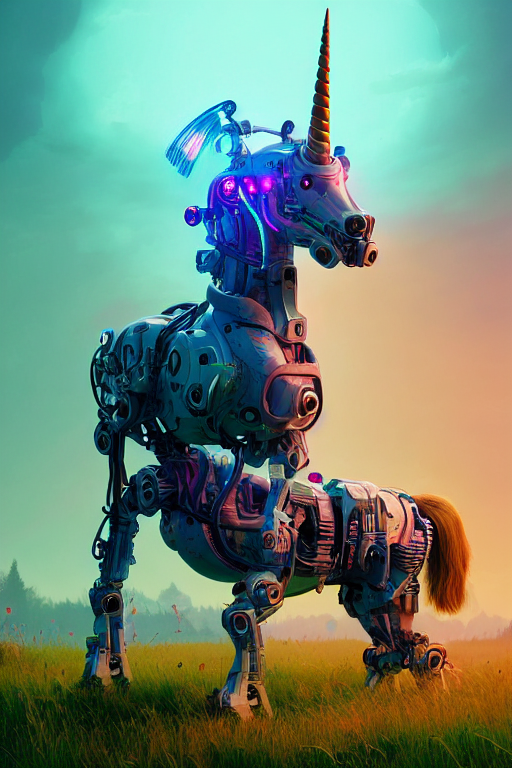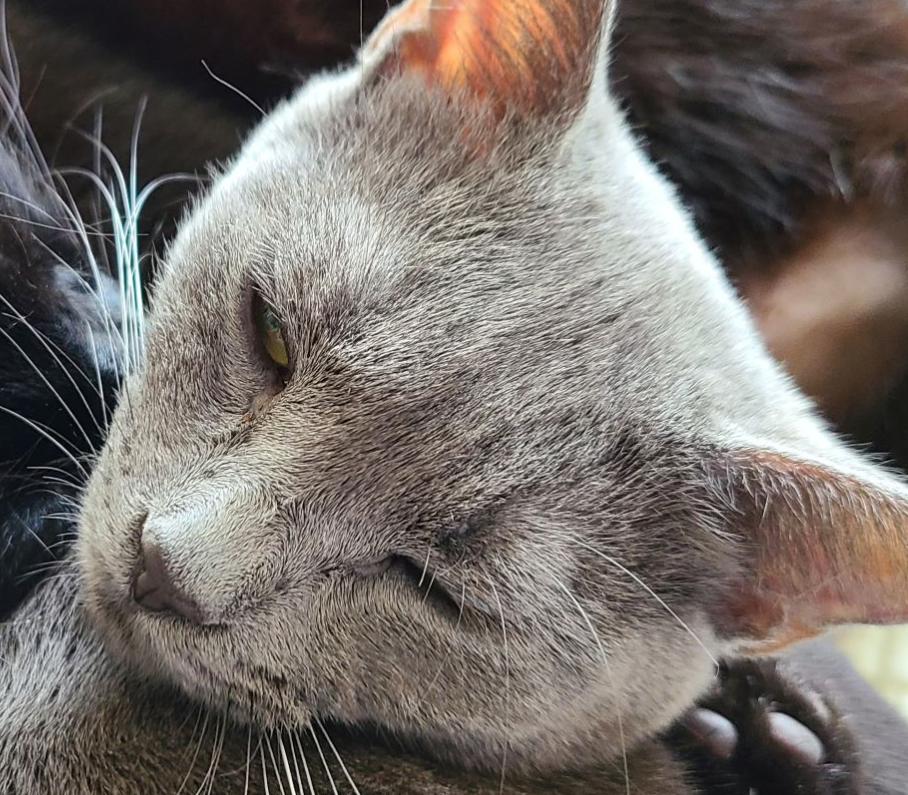img2aestheticscore
Maintainer: methexis-inc

236

| Property | Value |
|---|---|
| Model Link | View on Replicate |
| API Spec | View on Replicate |
| Github Link | No Github link provided |
| Paper Link | No paper link provided |
Get summaries of the top AI models delivered straight to your inbox:
Model overview
img2aestheticscore is an AI model that can assess the aesthetic quality of images. It is similar to other image-to-image models like GFPGAN, AbsoluteBeauty v1.0, and Stable Diffusion, which can generate, restore, or edit images. However, img2aestheticscore is specifically focused on evaluating the aesthetic appeal of an image.
Model inputs and outputs
The img2aestheticscore model takes a single input - an image file. It then outputs a numerical score representing the predicted aesthetic quality of that image.
Inputs
- Image: The input image file to be evaluated
Outputs
- Output: A numerical score representing the predicted aesthetic quality of the input image
Capabilities
The img2aestheticscore model can be used to automatically assess the aesthetic appeal of images. This could be useful for applications like image curation, photo editing, or design evaluation, where quickly gauging the visual quality of an image is important.
What can I use it for?
The img2aestheticscore model could be integrated into various applications or workflows that involve visual content. For example, it could be used by Replicate to help curate image galleries, or by designers to get rapid feedback on design concepts. It may also have potential uses in the art and photography communities for assessing the visual quality of creative works.
Things to try
With img2aestheticscore, you could experiment with evaluating a diverse set of images to see how the model's scoring correlates with your own aesthetic judgments. You could also try using the model in combination with other image processing or generation tools to streamline visual workflows.
This summary was produced with help from an AI and may contain inaccuracies - check out the links to read the original source documents!
Related Models

gfpgan

73.8K
gfpgan is a practical face restoration algorithm developed by the Tencent ARC team. It leverages the rich and diverse priors encapsulated in a pre-trained face GAN (such as StyleGAN2) to perform blind face restoration on old photos or AI-generated faces. This approach contrasts with similar models like Real-ESRGAN, which focuses on general image restoration, or PyTorch-AnimeGAN, which specializes in anime-style photo animation. Model inputs and outputs gfpgan takes an input image and rescales it by a specified factor, typically 2x. The model can handle a variety of face images, from low-quality old photos to high-quality AI-generated faces. Inputs Img**: The input image to be restored Scale**: The factor by which to rescale the output image (default is 2) Version**: The gfpgan model version to use (v1.3 for better quality, v1.4 for more details and better identity) Outputs Output**: The restored face image Capabilities gfpgan can effectively restore a wide range of face images, from old, low-quality photos to high-quality AI-generated faces. It is able to recover fine details, fix blemishes, and enhance the overall appearance of the face while preserving the original identity. What can I use it for? You can use gfpgan to restore old family photos, enhance AI-generated portraits, or breathe new life into low-quality images of faces. The model's capabilities make it a valuable tool for photographers, digital artists, and anyone looking to improve the quality of their facial images. Additionally, the maintainer tencentarc offers an online demo on Replicate, allowing you to try the model without setting up the local environment. Things to try Experiment with different input images, varying the scale and version parameters, to see how gfpgan can transform low-quality or damaged face images into high-quality, detailed portraits. You can also try combining gfpgan with other models like Real-ESRGAN to enhance the background and non-facial regions of the image.
Updated Invalid Date

real-esrgan

44.2K
real-esrgan is a practical image restoration model developed by researchers at the Tencent ARC Lab and Shenzhen Institutes of Advanced Technology. It aims to tackle real-world blind super-resolution, going beyond simply enhancing image quality. Compared to similar models like absolutereality-v1.8.1, instant-id, clarity-upscaler, and reliberate-v3, real-esrgan is specifically focused on restoring real-world images and videos, including those with face regions. Model inputs and outputs real-esrgan takes an input image and outputs an upscaled and enhanced version of that image. The model can handle a variety of input types, including regular images, images with alpha channels, and even grayscale images. The output is a high-quality, visually appealing image that retains important details and features. Inputs Image**: The input image to be upscaled and enhanced. Scale**: The desired scale factor for upscaling the input image, typically between 2x and 4x. Face Enhance**: An optional flag to enable face enhancement using the GFPGAN model. Outputs Output Image**: The restored and upscaled version of the input image. Capabilities real-esrgan is capable of performing high-quality image upscaling and restoration, even on challenging real-world images. It can handle a variety of input types and produces visually appealing results that maintain important details and features. The model can also be used to enhance facial regions in images, thanks to its integration with the GFPGAN model. What can I use it for? real-esrgan can be useful for a variety of applications, such as: Photo Restoration**: Upscale and enhance low-quality or blurry photos to create high-resolution, visually appealing images. Video Enhancement**: Apply real-esrgan to individual frames of a video to improve the overall visual quality and clarity. Anime and Manga Upscaling**: The RealESRGAN_x4plus_anime_6B model is specifically optimized for anime and manga images, producing excellent results. Things to try Some interesting things to try with real-esrgan include: Experiment with different scale factors to find the optimal balance between quality and performance. Combine real-esrgan with other image processing techniques, such as denoising or color correction, to achieve even better results. Explore the model's capabilities on a wide range of input images, from natural photographs to detailed illustrations and paintings. Try the RealESRGAN_x4plus_anime_6B model for enhancing anime and manga-style images, and compare the results to other upscaling solutions.
Updated Invalid Date

realisitic-vision-v3-image-to-image

71
The realisitic-vision-v3-image-to-image model is a powerful AI-powered tool for generating high-quality, realistic images from input images and text prompts. This model is part of the Realistic Vision family of models created by mixinmax1990, which also includes similar models like realisitic-vision-v3-inpainting, realistic-vision-v3, realistic-vision-v2.0-img2img, realistic-vision-v5-img2img, and realistic-vision-v2.0. Model inputs and outputs The realisitic-vision-v3-image-to-image model takes several inputs, including an input image, a text prompt, a strength value, and a negative prompt. The model then generates a new output image that matches the provided prompt and input image. Inputs Image**: The input image to be used as a starting point for the generation process. Prompt**: The text prompt that describes the desired output image. Strength**: A value between 0 and 1 that controls the strength of the input image's influence on the output. Negative Prompt**: A text prompt that describes characteristics to be avoided in the output image. Outputs Output Image**: The generated output image that matches the provided prompt and input image. Capabilities The realisitic-vision-v3-image-to-image model is capable of generating highly realistic and detailed images from a variety of input sources. It can be used to create portraits, landscapes, and other types of scenes, with the ability to incorporate specific details and styles as specified in the text prompt. What can I use it for? The realisitic-vision-v3-image-to-image model can be used for a wide range of applications, such as creating custom product images, generating concept art for games or films, and enhancing existing images. It could also be used in the field of digital art and photography, where users can experiment with different styles and techniques to create unique and visually appealing images. Things to try One interesting aspect of the realisitic-vision-v3-image-to-image model is its ability to blend the input image with the desired prompt in a seamless and natural way. Users can experiment with different combinations of input images and prompts to see how the model responds, exploring the limits of its capabilities and creating unexpected and visually striking results.
Updated Invalid Date

realisitic-vision-v3-inpainting

324
realisitc-vision-v3-inpainting is an AI model created by mixinmax1990 that specializes in inpainting, the process of reconstructing missing or corrupted parts of an image. This model is part of the Realistic Vision series, which also includes models like realistic-vision-v5-inpainting and realistic-vision-v6.0-b1. These models aim to generate realistic and high-quality images, with a focus on tasks like inpainting, text-to-image, and image-to-image translation. Model inputs and outputs realisitc-vision-v3-inpainting takes in an input image and a mask, and generates an output image with the missing or corrupted areas filled in. The model also allows users to provide a prompt, strength, number of outputs, and other parameters to fine-tune the generation process. Inputs Image**: The input image to be inpainted. Mask**: A mask image that specifies the areas to be inpainted. Prompt**: A text prompt that provides guidance to the model on the desired output. Strength**: A parameter that controls the influence of the prompt on the generated image. Steps**: The number of inference steps to perform during the inpainting process. Num Outputs**: The number of output images to generate. Guidance Scale**: A parameter that controls the trade-off between generating images that are closely linked to the text prompt and generating more diverse images. Negative Prompt**: A text prompt that specifies aspects to avoid in the generated image. Outputs Output Image(s)**: The inpainted image(s) generated by the model. Capabilities realisitc-vision-v3-inpainting is capable of generating high-quality, realistic inpainted images. The model can handle a wide range of input images and masks, and can produce multiple output images based on the specified parameters. The model's ability to generate images that closely match a text prompt, while also avoiding undesirable elements, makes it a versatile tool for a variety of image editing and generation tasks. What can I use it for? realisitc-vision-v3-inpainting can be used for a variety of image editing and generation tasks, such as: Repairing or restoring damaged or corrupted images Removing unwanted elements from images (e.g., objects, people, text) Generating new images based on a text prompt and existing image Experimenting with different styles, settings, and output variations The model's capabilities make it a useful tool for photographers, designers, and creative professionals who work with images. By leveraging the power of AI, users can streamline their workflow and explore new creative possibilities. Things to try One interesting aspect of realisitc-vision-v3-inpainting is its ability to generate multiple output images based on the same input. This can be useful for exploring different variations and finding the most compelling result. Users can also experiment with the strength, guidance scale, and negative prompt parameters to fine-tune the output and achieve their desired aesthetic. Additionally, the model's inpainting capabilities can be combined with other image editing techniques, such as image-to-image translation or text-to-image generation, to create unique and compelling visual compositions.
Updated Invalid Date